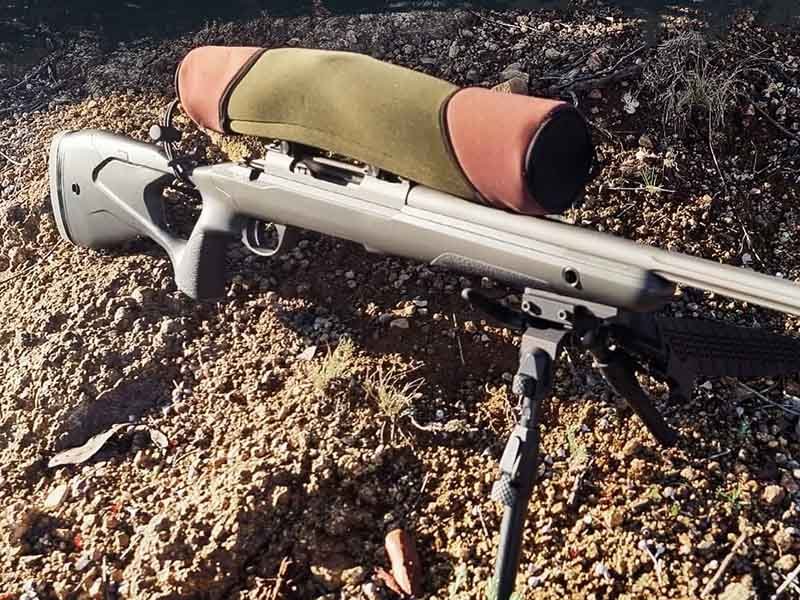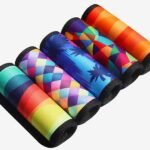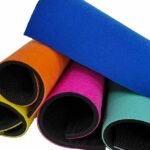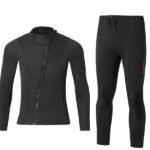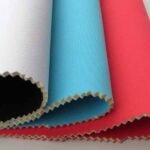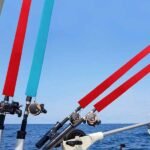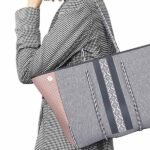In the world of outdoor optics, protecting your investment is just as important as choosing the right gear. Whether you’re a hunter, tactical shooter, or optics brand, your riflescope is a precision instrument—exposed to harsh environments like dust, mud, rain, or snow. That’s where neoprene scope covers come in. These soft, flexible, weather-resistant sleeves are designed to shield scopes from impact, moisture, and scratches without the bulk or weight of a hard case. The best neoprene scope cover offers stretch-fit protection, water resistance, and shock absorption. It should be made from thick, closed-cell neoprene (typically 3–5mm), tailored to your scope’s size, and feature reinforced stitching for durability. OEM suppliers like Szoneier allow full customization with logo printing and packaging, low MOQs, and fast lead times.
Still unsure why a snug piece of foam rubber can make a difference? One of our OEM clients in Europe used generic nylon covers before switching to custom neoprene ones. Within months, their return rate for scratched optics dropped by 35%, and they started offering co-branded options for outdoor retailers—boosting both function and brand visibility. This isn’t just a product—it’s a business asset.
Let’s explore how to select, customize, and source the best neoprene scope covers for your needs.
What Is a Neoprene Scope Cover and Why Do You Need One?

A neoprene scope cover is a protective sleeve designed to fit snugly over a rifle scope. It shields optics from dust, water, UV light, and scratches while being easy to stretch on and off without disturbing your sight settings.
Neoprene scope covers are especially popular among hunters, tactical shooters, and military users due to their lightweight protection. Unlike hard cases, neoprene covers are quick to remove, silent in action, and compact for field carry. Their stretchable form fits a wide variety of scope diameters and lengths.
Most high-quality covers use closed-cell neoprene, the same material used in wetsuits. It resists water absorption and provides insulation against sudden temperature changes—critical for preserving zero in optical systems. Additionally, the interior layer is often brushed to prevent lens scratches.
Common threats to scopes include:
- Dust and dirt that can scratch lenses
- Moisture from rain, fog, or condensation
- Bumps and impact during transport
- UV rays that cause coating degradation
Neoprene’s compressibility and elasticity allow it to create a cushioned barrier without interfering with quick deployment. That’s why it’s preferred by professionals who need real-world performance over gimmicks.
Szoneier offers a range of OEM scope cover options that include quick-pull tabs, embossed logos, and sizing for compact red-dot to long-range scopes.
Which Neoprene Material Specs Offer the Best Protection for Optics?
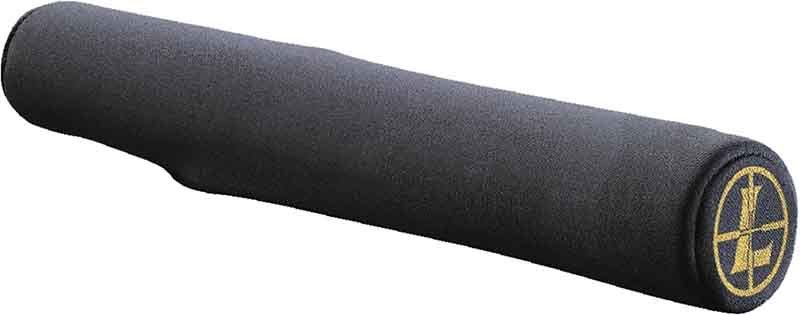
The best neoprene for scope covers is closed-cell, 3–5mm thick, and laminated with durable polyester or nylon outer layers. It should resist moisture, impact, and abrasion under outdoor conditions.
Not all neoprene is created equal. The type used in laptop sleeves or drink koozies won’t stand up to a week in the mountains. For scope covers, thickness and density matter. A 3mm material might suffice for range bags or casual shooters, but field use—especially in rough or wet terrain—calls for 4–5mm.
Ideal Specifications:
- Material Type: CR or SBR Neoprene (Closed-cell)
- Thickness: 3mm (standard), 5mm (rugged use)
- Lamination: Polyester/nylon for durability
- Backing: Brushed tricot or microfiber for lens safety
- Stretch Factor: Minimum 120% to allow snug fit
Performance Benefits:
- Water-resistant and won’t absorb moisture
- Cushions against impact or drop
- Maintains elasticity across temperature changes
- Offers thermal protection to minimize optical distortion
Neoprene also naturally resists mold and bacteria, an added bonus for long-term use in damp environments. For brands offering premium outdoor gear, using lower-grade neoprene can harm both performance and perception.
At Szoneier, we source high-grade neoprene with REACH and RoHS certifications, ensuring compliance with EU/US regulations while offering consistent compression recovery and print surface adhesion.
How Do You Choose the Right Size and Fit for a Neoprene Scope Cover?
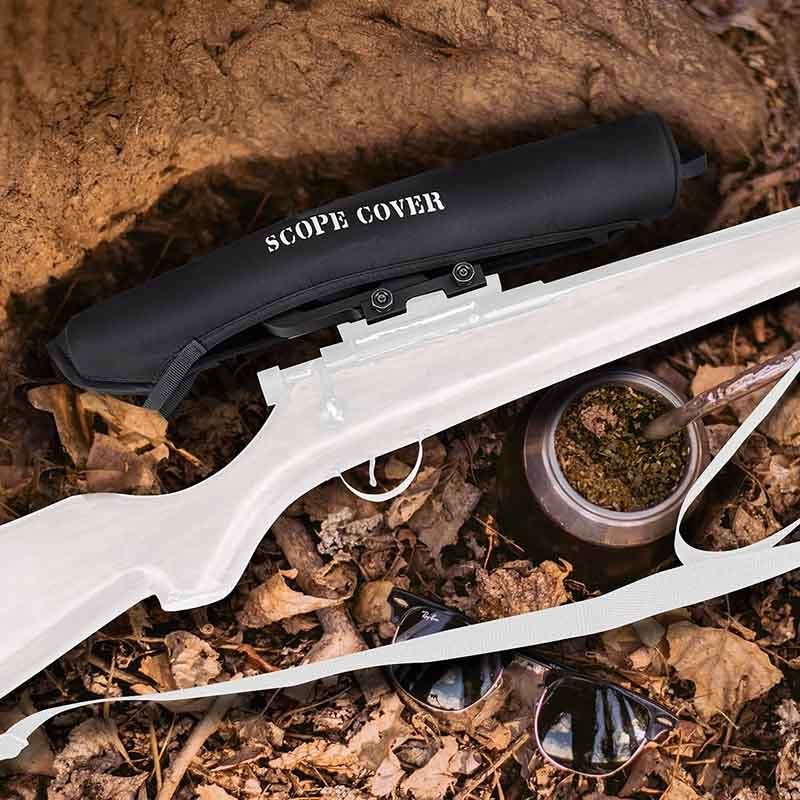
Choosing the right size neoprene scope cover depends on your scope’s length, diameter, and objective lens profile. The best fit is snug but stretchable without compressing adjustment knobs or turrets.
An ill-fitting scope cover can fall off or allow moisture to seep in—two things every shooter wants to avoid. That’s why sizing is critical. Generic one-size-fits-all covers might work for entry-level scopes, but high-end optics demand precision.
Sizing Considerations:
- Overall Scope Length (typically in inches or mm)
- Objective Lens Diameter (30mm, 50mm, etc.)
- Tube Size (1 inch vs. 30mm)
- Shape of Elevation Knobs or Parallax Turrets
Custom-fit covers contour around elevation dials and illumination turrets without pressing too tightly. Some brands prefer split-construction designs (with hook-and-loop openings), while others go with closed-end sock-style sleeves.
At Szoneier, our OEM clients often provide technical drawings, physical samples, or reference photos to ensure we match sizing with laser precision. We also maintain a library of standard patterns for most popular scope models, reducing development time.
Bonus Tip: We recommend designing covers with an elastic trim edge to maintain fit tolerance across product lines with slight variances.
What Key Features Should a High-Quality Scope Cover Include?
A high-quality neoprene scope cover should include thick neoprene, reinforced stitching, easy-grip removal tabs, waterproof lamination, and optional branding zones.
Beyond material specs, premium design features significantly enhance user experience and field functionality. Here are must-have characteristics of top-performing scope covers:
- Pull Tab Design: Finger loops or tabs at both ends for fast, silent removal.
- Reinforced Seams: Flatlock or blind stitching prevents unraveling with repeated use.
- Logo Branding Zone: Space for printed or embossed logos to enhance brand visibility.
- Interior Lining: Brushed tricot or microfiber protects lens coatings.
- Weatherproof Finish: Outer lamination blocks water and UV degradation.
- Color Options: Black, camo, OD green, tan, or custom Pantone shades.
- Attachment Loop: Optional loop for carabiner hook or lanyard.
At Szoneier, we’ve helped tactical brands develop modular scope cover sets with matching colors and logo prints across product lines, reinforcing identity on every accessory.
Whether your end users are hunters trekking through forests or soldiers in arid zones, features like a quick-release tab or reinforced edges can make all the difference in harsh environments.
Are Neoprene Scope Covers Suitable for All Environments and Applications?
Yes. Neoprene scope covers are suitable for rugged, wet, and extreme conditions. They are commonly used in military, tactical, hunting, and marine environments.
Closed-cell neoprene was originally designed for underwater applications—and it shows. Its ability to resist moisture absorption, insulate against temperature fluctuations, and bounce back from impact makes it ideal for various environments:
- Rainy or Wet Climates: Water rolls off the outer layer; interior stays dry.
- Cold Environments: Insulates scope from fog-inducing condensation.
- Desert/Tactical Zones: Dust and UV protection for lens clarity.
- Marine Use: Saltwater-resistant; does not degrade like open-cell foams.
Some brands also use neoprene covers during storage or transport, not just in-field use. Neoprene is soft enough to sit inside a range bag, tough enough to ride on a rifle in the field.
Szoneier can even produce flame-retardant neoprene covers or reflective models for specialized law enforcement units.
Do OEM/Private Label Scope Cover Suppliers Offer Custom Printing and Sizing?
Yes. Suppliers like Szoneier offer full OEM and ODM services including logo printing, custom size molding, pattern cutting, and personalized packaging.
Customization is what turns a basic scope cover into a branded product line. Whether you’re a tactical brand, outdoor lifestyle label, or optics accessory distributor, Szoneier supports:
- Logo Printing: Heat transfer, silkscreen, embossed or reflective ink.
- Shape Molding: Custom contour cuts to fit irregular scope designs.
- Multi-Color Panels: Color blocking for style or visibility.
- Private Label Packaging: Hangtags, QR codes, barcode stickers.
- Bulk Kitting: Matching sets with binocular, spotting scope, and scope covers.
We also offer 3D design previews and pre-production samples. Our fast-response design team supports English, Spanish, and French communication, making global collaboration seamless.
How Does Neoprene Compare to Other Scope Cover Materials Like Rubber or Nylon?
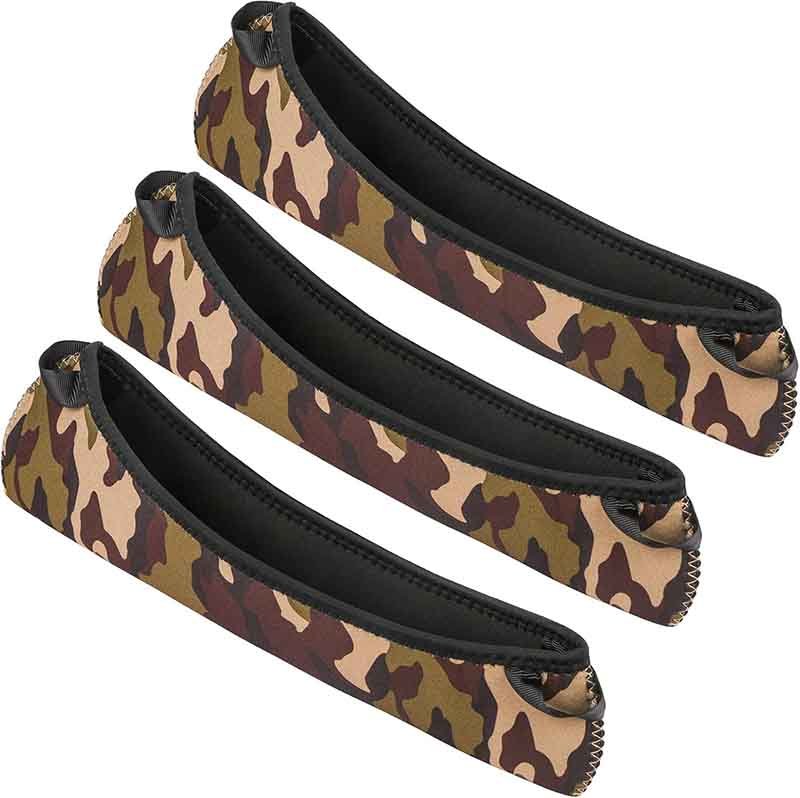
Neoprene provides better stretch, insulation, and water resistance compared to rigid rubber or light-duty nylon covers. It balances protection with flexibility.
| Material | Protection | Flexibility | Weight | Water Resistance | Customization |
|---|---|---|---|---|---|
| Neoprene | High | High | Medium | Excellent | Excellent |
| Rubber | High | Low | Heavy | Good | Limited |
| Nylon | Low | High | Light | Poor | Moderate |
Rubber covers can crack over time and add weight, while nylon models often lack padding. Neoprene hits the sweet spot: durable, soft, customizable, and stylish.
What MOQ and Lead Time Can You Expect from a Neoprene Scope Cover Manufacturer?
At Szoneier, MOQs start from 300 units with samples in 5–7 days and bulk production in 15–25 days depending on design complexity.
We understand buyers value speed and flexibility. That’s why we’ve optimized our production for:
- Low MOQs: Starting at 300 pcs per size or color
- Sample Turnaround: 5–7 working days
- Bulk Lead Time: 15–25 days
- Free Samples: For first-time clients with confirmed specs
- Multiple SKUs per Order: Mix scope, bino, and gun covers
Our clients range from Amazon sellers and hunting clubs to tactical OEM brands and national distributors. Whether you need a short run of prototypes or a container of retail-ready product, we can scale with you.
Final Thoughts: Choose the Right Scope Cover Partner
Neoprene scope covers aren’t just accessories—they’re a key part of your product ecosystem. Choosing the right supplier means:
- Faster lead times
- More reliable fit and quality
- Better brand control
- Less risk of returns or product failure
📞 Ready to create your custom scope covers?
Contact Szoneier Today:
- Email: manager@neoprene-bag.com
- WhatsApp: +86 13423847456
- Website: www.neoprene-bag.com
Get free design support, low-MOQ production, and samples delivered fast. Let’s protect your optics—and your brand reputation—together.

